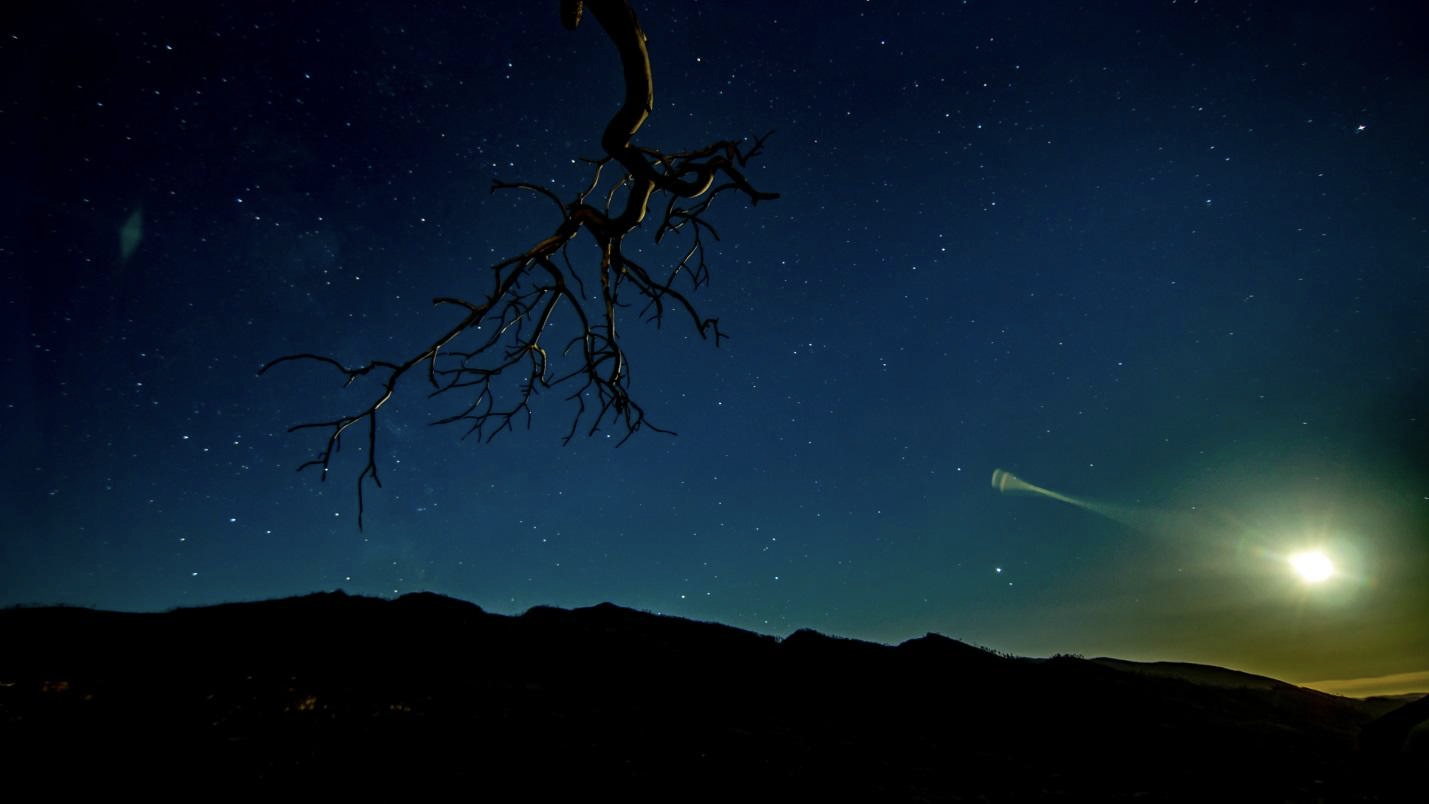Johns Family Nature Conservancy Regional Park, Nocturnal Preserve
British Columbia’s Johns Family Nature Conservancy Regional Park is a park within Regional District of Central Okanagan and is directly adjacent to, and south of, the City of Kelowna which has ample resources for visitors. The Park was designated as an RASC Nocturnal Preserve on May 3th, 2023. The stated goals of the site are to protect the quality of the night sky, promote minimal light pollution and maintain ecologically rich night-time habitat for important Okanagan species.
The park is 405.8 Ha in size, and comprises the largest private land donation in the history of the province. Because of the proximity of Kelowna, sky brightness in the Park varies strongly with transparency conditions; values of 20.23 to 20.70 mag/arcsec2 have been recorded.
Visitors access the park via Chute Lake Road just outside the City of Kelowna boundary. That road transitions to gravel and the park is approximately 2.9 km along the gravel portion of the road (street address 6970 Chute Lake Road). Visitors come to the park to hike, birdwatch, mountain bike, rock climb, snowshoe, and enjoy panoramic vistas. Johns Family Nature Conservancy Regional Park is nominally open dawn to dusk, with Park hours shifting seasonally. Outreach programming includes stargazing nights in cooperation with the Okanagan Centre of the RASC as well as nighttime guided hikes with such themes as “Owl Prowl”, “Bats” and “Creatures of the Night.” Some outreach events are conducted in conjunction with, or at Environmental Education Centre for the Central Okanagan, located in Mission Creek Regional Park. Find out more about planned events here.
Johns Family Nature Conservancy Regional Park represents several unique ecosystems of the Okanagan including grasslands (only 1% of which remain intact within the Interior of British Columbia), rock bluffs, wetlands, forested areas, and creek corridors. Pockets of wetlands with cattail marsh and open water communities are also scattered throughout the Conservancy, adding to the habitat and wildlife diversity. Four of the ecosystem communities with the Conservancy are Red-listed and five are Blue-listed in British Columbia. These designations indicate that they are endangered or are of special concern, respectively. Many of the ecosystem communities provide suitable habitat for species at risk, including the Western Toad, Lewis’s Woodpecker, Barn Swallow, and Yellow-Bellied Racer, all of which have been documented within the Conservancy. In fact, the Okanagan valley has more threatened, endangered and rare species than any other part of British Columbia and has one of the highest concentrations of species-at-risk in Canada. The Johns Family Nature Conservancy Regional Park acts as a local dark refuge from the urbanized environment next door and is an important stop along the Okanagan Valley migratory bird flyway. The Park’s bird list includes more than 65 species. The Vaseaux Lake Bird Observatory, some 50 km to the south, captures between 58 and 71 different species of migratory birds, including songbirds (that migrate through the region at night) and hawks on an annual basis. Nocturnal and crepuscular resident species include Barn, Flammulated, Short-Eared, and Western Screech owls, Black Swift, Common Nighthawk, and Little Brown Myotis, Western Small-Footed Myotis, and Pallid, Spotted, and Townsend’s Big-Eared bats, all of which will benefit from the Park’s light pollution abatement efforts.
Google Maps link: https://goo.gl/maps/EvDbzAKVsBx3uA6Y6

